
Volume XVII, Issue XV
During the ‘Dark Ages’ the great Roman society collapsed. As society underwent upheaval it was the Church that preserved the rich traditions and the literature. Monasteries kept learning alive. Informed by Scripture, the Church maintained the libraries and the body of knowledge out of which renewal would come. This special issue of THYME looks at the place true Faith has had in such renewal.
Tammy Hornek's art classes at United Christian Academy in Stanardsville, Virginia traveled to Baltimore Maryland's Graffiti Alley where they completed a remarkable work in less than four hours!
Daniel Gavra Lights a Candle
Chuck Colson tells this powerful story: “It's the story of Timisoara, Romania, where Laszlo Tokes reformed church. He started to preach the gospel, and this was in 1988, and he soon had 5,000 members in his church. And the church was just vibrant and alive, and the secret police couldn't stand that kind of growth. And so they started to beat him and persecute him, tried to kill him. And eventually in the fall of 1989, when communism began to fall in Eastern Europe, the secret police came and they surrounded his church. And Laszlo Tokes said it was a turning point of his life because he looked out the windows and saw the tanks and the secret police. But he also saw the people of his community, of every church, Orthodox, Catholic, Baptist, Presbyterian, Romanians, Hungarians surrounding that church. And they stood between him and the secret police to protect their pastor. He said it changed his life because all of his old prejudices faded away because he saw that all the people of God were there, the body. Into that crowd one night came a young Baptist lad, 19 years old, his name was Daniel Gavra. Daniel Gavra walked up to his pastor, Peter Dugulescu, and had something under his coat. And Peter said, “Oh, don't bring a weapon in here.” And young Daniel Gavra said, “I don't have a weapon, pastor.” He opened his coat. He had a box of candles. They started lighting candles. They passed them out among the crowd. Some of you may remember, who are listening on the radio, seeing the picture in this Timisoara square, thousands of lights at night. And the communists could not stand it because that city was ablaze with the light of the gospel, with God's people standing there, surrounding this church. The next day, Ceausescu couldn't stand it. He ordered them to open fire. Daniel Gavra, that 19-year-old lad who brought the candles in, had his right leg blown off. Four days later, the pastor went to see him in the hospital. Daniel Gavra was lying there. The pastor said, “It must be tough to have lost your limb.” And Gavra said, “Oh no, pastor. But it was I who lighted the first candle.” Oh God, give us the strength and the courage in America to be willing to give our limbs to light the first candle.”
The Church’s Role in a Post-Christian Society
[click to read]
In this fall’s Areopagus Lecture, “‘For Freedom Set Free’: Retrieving Genuine Religious Liberty,” philosopher D. C. Schindler spoke about the Christian notion of religious liberty as a synthesis of the Jewish, Roman, and Greek traditions. In the Jewish tradition, one receives a theological understanding of freedom understood as freedom from bondage and from sin in order to more fully enter into a loving covenant with God. In the Roman tradition, freedom exists in relation to one’s membership within a polis and is established through legal codes. This objective political presence is internalized and personalized through the education of virtuous citizens. And in the Greek tradition, freedom is understood in relation to nature, on the one hand through membership in a tribe by kinship, and on the other hand, through participation in the Good, which is at the source of all being. Christianity, argues Schindler, is precisely the “receiving, healing, and transforming [of these] three distinct traditions” and Christian freedom is their “flourishing integration.”
Modern liberalism, by contrast, has stepped outside of the Christian tradition and its synthesis of Jewish, Greek, and Roman thought. While religious freedom as it is understood today gives the impression of being amenable to religious faith of all types by claiming neutrality, it does so only by making all religions matters of private faith and preference. Religion, which historically has made ultimate and authoritative claims about reality, is reduced within modern liberalism to mere opinion. Through institutional obstruction of ultimate claims, modern liberalism threatens not only our protection from coercion, but ultimately the very meaning of nature, human and otherwise.
When St. Paul tells the Galatians that “for freedom Christ has set us free,” argues Schindler, he is not only referring to freedom understood in theological terms, but also to freedom that is political and historical, as well as natural and metaphysical. In other words, the freedom for which Christ has set us free encompasses all of reality and all of human experience. (read more)
The Mayor Who Made a Difference
An Article for the June 1996 Deep Cove Crier
by Reverend Ed Hird, Rector,
St. Simon’s Anglican Church, Used with his permission.
So often, Toronto functions as the city that other Canadians feel the most ambivalent about. The proverbial expression "Can anything good come out of Nazareth?" readily comes to my mind as I think of Toronto. And yet ironically, the nickname "Toronto The Good" points to a side of Toronto that has largely been forgotten in the Canadian amnesia about our own heritage and roots. I was talking recently to Phyllis Beck, the Deep Cove Crier Seniors Columnist, about Toronto roots, only to discover that her daughter-in-law, Barbara Hall, is the current Mayor of Toronto. I commented to Phyllis about the recent discovery that my Great-great-grandfather, Thomas Allen, was a senior Alderman in Toronto during a period of 19 years. When I was in Toronto a few months back, getting a first-hand glimpse of the "Toronto Blessing", I kept driving back and forth past Allen Road. My ignorance about this road named after my Torontonian ancestor reminded me afresh of our Canadian forgetfulness about some of our own heroes.

William H. Howland
One such hero was Mayor William Howland of Toronto, a public servant who was so dedicated to helping the disadvantaged that he gave away most of his wealth. Son of the Honorable W.P. Howland, the first Lieutenant-Governor of Ontario, William was possessed with a bubbly enthusiasm and phenomenal capacity for hard work. By the age he was 25, William was president, vice-president, or a director of more than a dozen companies in the fields of insurance and finance, electrical services, and paint manufacturing. When he became president of the Queen City Fire Insurance Company in 1871, he was the youngest insurance company president in Canada. As well, Howland was President of three influential organizations: the Toronto Board of Trade, the Dominion Board of Trade, and the Manufacturer’s Association of Ontario. Out of his love for his country, he served as Chairman of the Canada First movement, personally financing its weekly newspaper "The Nation".
At age 32, Howland was led to Christ by his priest, Dr. W.S. Rainsford of St. James Anglican Cathedral. His life-changing experience gave him a new passion for helping the poor. He became involved helping with the Hillcrest Convalescent Hospital, the YMCA, the Haven Home for Unwed Mothers, the Prisoner’s Aid Association, the Central Prison Mission School, and the Toronto General Hospital. Night after night, Howland visited the slums, going from house-to-house, and reaching out to the poor, the sick, and the alcoholic. He also purchased 50 acres to start an Industrial School in order to steer youth away from the life of crime. Other initiatives were his building an alternative school for drop-outs, and a Home for the Aged and Homeless Poor. When he began to teach an interdenominational bible study for 100 young men, his new priest J.P. Lewis objected to Howland’s involvement with non-Anglicans. Out of this rejection, he began the interdenominational Toronto Mission Union, which operated seniors’ homes, convalescent homes, and Toronto’s first-ever home nursing service.
Because of his great compassion for the poor, he was elected as Mayor of Toronto in 1885, with a strong mandate to clean up the city. Howland signaled his arrival in the mayor’s office by installing a twelve-foot banner on the wall, reading, "Except the Lord Build the City, the Watchman Wakes but in Vain". Despite fierce opposition, Howland was so successful, that Toronto became nicknamed "Toronto the Good". As champion of the poor, Howland and his Alliance friend, Rev. John Salmon, would tramp the lanes and alleys, feeding the poor, praying over the sick, and comforting the sad. With a population of just 104,000, Toronto had over 800 licensed and unlicensed saloons. Over half of all criminal offenses recorded in 1885 were related to drunkenness.
Howland is described in Desmond Morton’s book "Mayor Howland: the Citizen’s Candidate" as the first reform mayor in Toronto’s history. Due to bureaucratic corruption, municipal garbage collection was all but non-existent. Even City Hall’s own garbage was rarely picked up. Rotting garbage fouled the alleyways, yards, and streets, giving Toronto a reputation for flies, stench, and disease. With no general sewage system, Toronto lived on the verge of a typhoid epidemic. Children swam in the same Toronto harbour area into which raw sewage was flowing from the ditches. Toronto’s fresh water supply was sucked through leaking and rotting wooden pipes, half buried in the sewage and sludge of the Toronto harbour.
Howland believed that we didn’t usually need more laws; we just needed to enforce the ones that already existed. He shocked the city bureaucrats by enforcing the already existing bylaw which forbid the depositing of garbage within the city limits. After he threatened to send the city commissioner to jail for breaking this bylaw, garbage miraculously began to be collected! Howland also worked hard in the construction of a trunk sewer system, to redirect the sewage away from the Toronto Harbour. He had such a dramatic impact in reducing the crime rate that other mayors began visiting Toronto, hoping to imitate Howland’s miracle.
During his re-election campaign in 1887, all the taxi cabs were paid off by Howland’s opponent so that they would refuse to take Howland’s supporters to the polling stations. Women however (2,000 widows and single women with property) had just been given the vote. So they held up their long Victorian dresses, and trucked through the snow to give Howland the moral reformer a second term. When Howland was re-elected by a landslide, over 3,000 of his supporters at the YMCA hall spontaneously burst into singing "Praise God From Whom All Blessings Flow.".
After he unexpectedly stepped down as Mayor after two terms, Howland became the founding President of the Christian Alliance (which later took the name C&MA: Christian and Missionary Alliance). The unique interdenominational nature of the early C&MA allowed Howland to be its president, while still remaining an Anglican. When he died unexpectedly at age 49, his funeral involved Anglican, Alliance, and Presbyterian clergy. With more than a thousand mourners on foot from all social classes, it was the largest funeral procession that had ever been held in Toronto. A poem published in the Toronto Globe said of Howland: "And not Toronto mourns alone; All Canada his fame had heard; His name is dear, a household word, And far and wide, his worth was known". May William H. Howland continue to be a living symbol of the difference that just one Canadian can make.
Reverend Ed Hird, Rector,
St. Simon’s Anglican Church
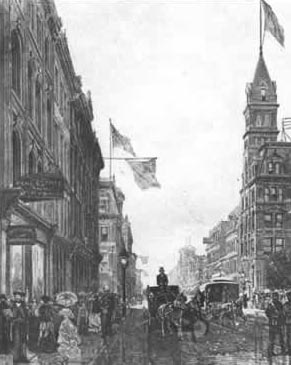
Toronto in the late Nineteenth Century.
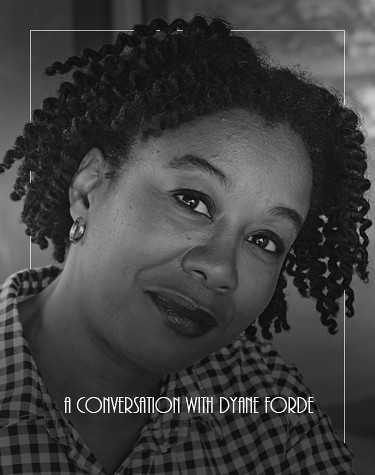
Dyane Forde
The Creative Mind Behind Lost Pen Magazine
Interview [click to listen]
Nurture and Young Imagination
By Bob Kirchman
Published in Lost Pen Magazine [click to read]
Here is Dyane Forde’s Lost Pen Magazine. I am very pleased to be a part of it! (Link will be active on June 3rd).
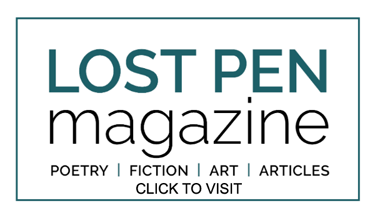
Welcome to my new venture and the realization of a dream: the creation of the Lost Pen Magazine, a free, digital Christian literary and arts magazine!
For a long time, I struggled to find a place for my writing which often straddled genre and literary fiction. As book clubs and magazines began popping up for Christian romance, speculative fiction, and fantasy it seemed there wasn’t much out there for writers and readers of short fiction and poetry that dealt with Christian themes in a thoughtful, reflective manner that didn’t involve aliens, zombies, or two starry-eyed lovers trying to find their way to each other against all odds. Also, digital magazines are easy to distribute, which appealed to my desire to feature and share top-quality writing pieces and visual art.
So, I decided to create my own digital magazine to provide a platform for the ‘lost voices’ of Christian literary fiction writers and artists. I hope you’ll join this journey with me and support me as I put this project together. – Dyane Forde
Greater Montreal, June 3, 2019—The Christian Creative Nexus (CCN), an online support and promotional resource for Christian creatives, and Focus Writing Services (FWS), a freelance writing and editing service dedicated to enabling writers, businesses, and organizations to produce exceptional written content, are publishing their first digital Christian arts and fiction magazine, Lost Pen Magazine. The publication will be free and available on Issuu and Mailchimp (PDF version).
The CCN and FWS hold that God expects His people to excel at producing good work, as what His people create is a reflection of Him. Lost Pen Magazine originated from the need to take supporting and promoting Christian Creatives to a higher level than what was possible via a website, and a desire to produce a wide-reaching publication with a reputation for excellence—evidence that Christians are highly creative and capable of producing top-notch, quality written and visual work. Ultimately, Lost Pen Magazine hopes to build up and motivate local and global Christian creative communities while reaching non-believers for Christ.
For more information about Lost Pen Magazine, the Christian Creative Nexus, or Focus Writing Services, please contact founder and editor Dyane Forde at fwritingservices@gmail.com.
Faith in the Marketplace
Ron Reagan, the 60-year-old son of the late President Ronald Reagan, has been featured in a televised commercial proudly proclaiming his atheist views that ran at the midpoint of the last Democrat Party Debate.[1.] The placement is interesting. “Where would you buy a spot to promote the ‘Freedom from Religion Foundation’ and find your biggest base of supporters?” asked one commentator. This in the wake of candidate Elizabeth Warren’s bashing of ‘Christian Men’s Values.’[2.] We’ve gone beyond Mrs. Clinton’s ‘Freedom to Practice One’s Religion’ (in private) [3.] to a direct hostility to Faith participation in public life. Somehow we can declare certain people’s (one in particular) actions ‘immoral,’ yet we have to strike from the record the most clear descriptives of what morality is. Leftists want to tell us that religion has no place in the public discourse, yet they promote Sharia courts. They tell us that the Ten Commandments can’t inform our behavior. ‘Morality’ becomes reduced to a series of their most vociferous supporters’ preferred social issues. Still, a Scriptural understanding of our Faith tells us that we indeed have a message for the world around us and that we should engage the culture.
Most Americans still identify with believing in God and profess that to some degree that informs their lives. As much as the Ron Reagans of the world would like us to think otherwise, our Christian heritage still informs most of us when it comes to moral principles. That media figures and politicians say otherwise displays a lack of touch with the people they purport to represent.
The Steeples of Staunton
Photos by Bob Kirchman
Spires Seen Along Lewis Street...
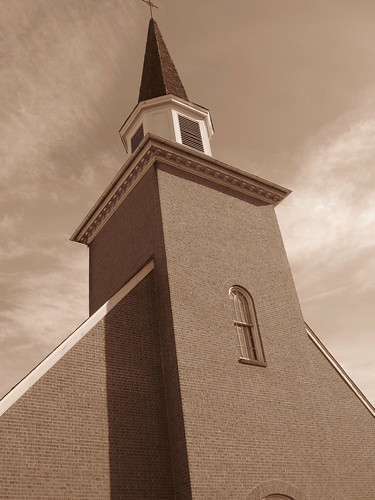
Faith Lutheran Church.
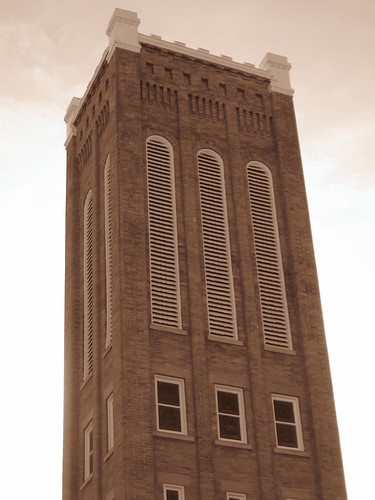
Central United Methodist Church.
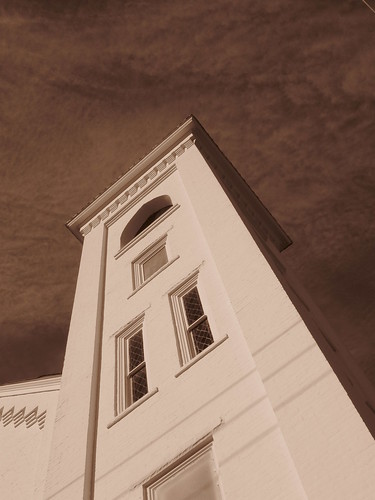
Second Presbyterian Church.
Spires Seen Along Frederick Street...
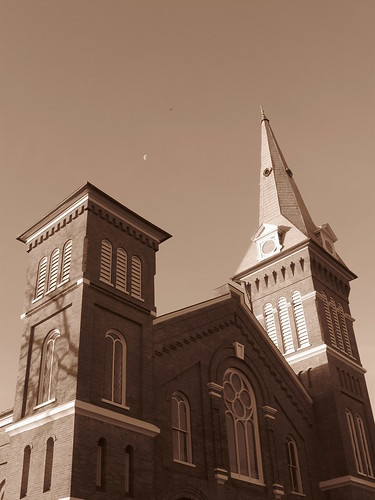
First Presbyterian Church.
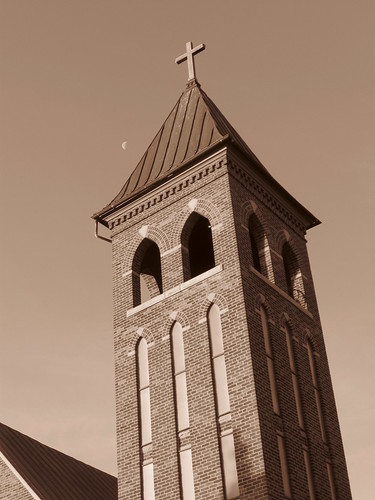
Emmanuel Episcopal Church.
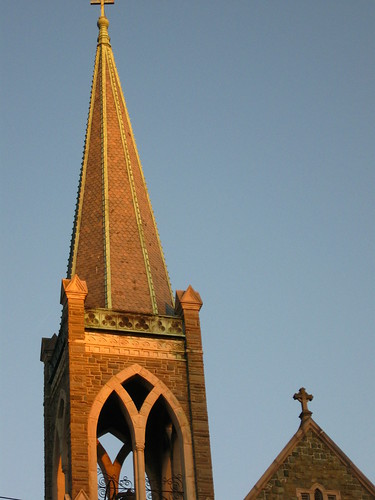
In the distance, one can see the spire of St. Francis Catholic Church.
Spires Seen Along Market, Church and Augusta Street
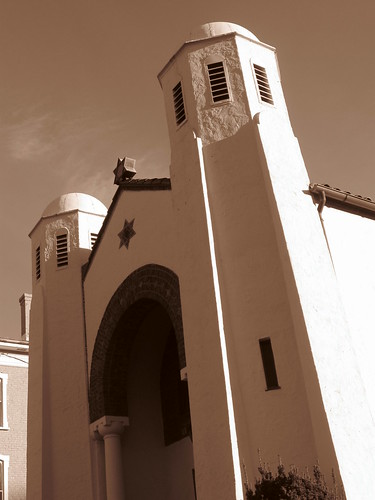
Temple House of Israel.
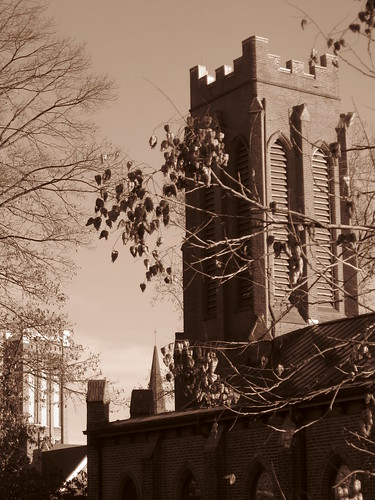
Trinity Church.
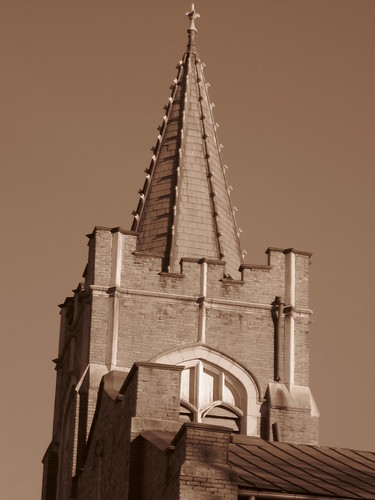
Augusta Street United Methodist Church.
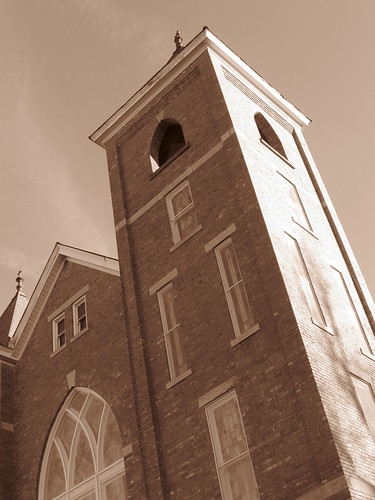
Ebenezer Baptist Church.
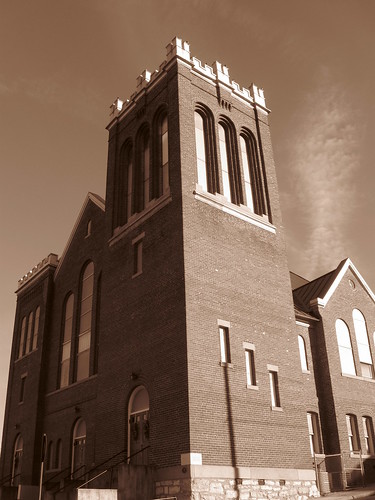
Mount Zion Baptist Church.
Spires Seen Along West Beverley and Frederick
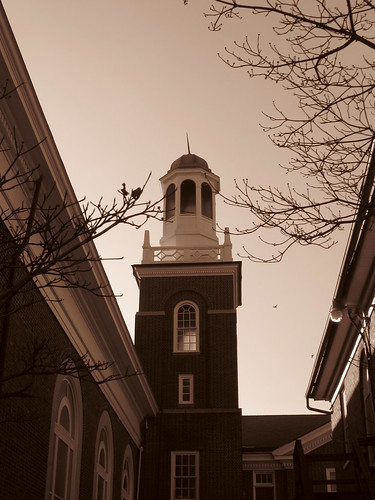
First Baptist Church.
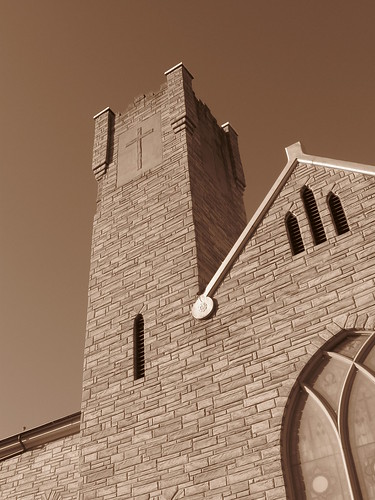
Staunton Grace Covenant Church.
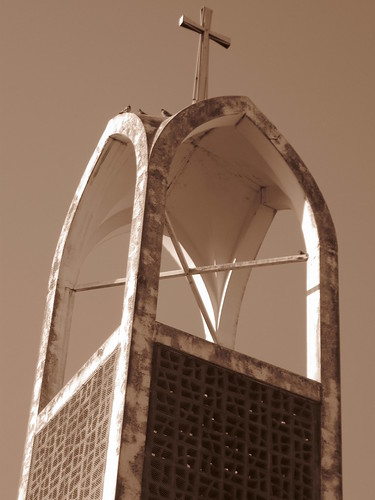
Marquis Memorial United Methodist Church.
Spires Seen Along N. Augusta and N. Coalter Streets
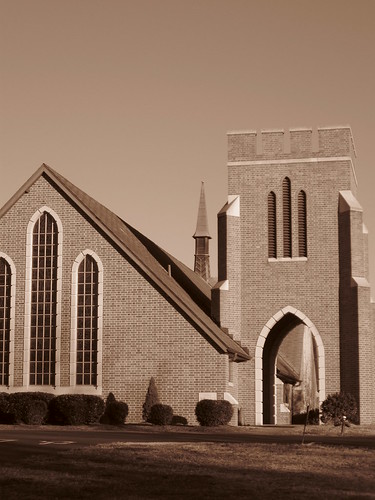
St. John's United Methodist Church.
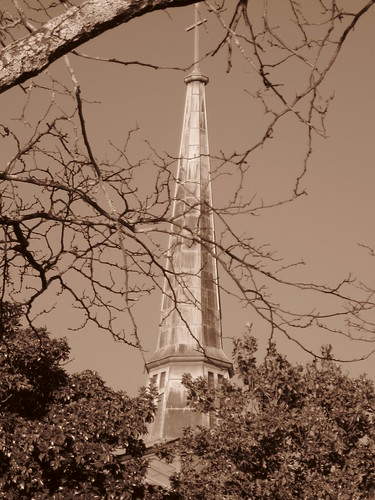
Christ Lutheran Church.
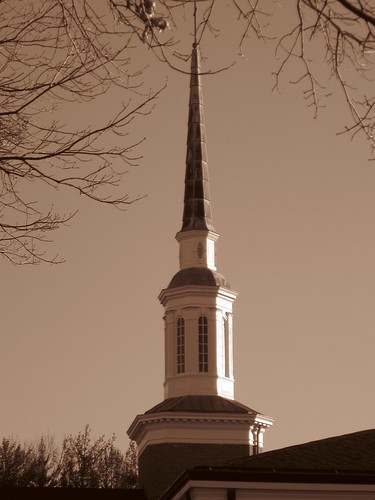
Covenant Presbyterian Church.
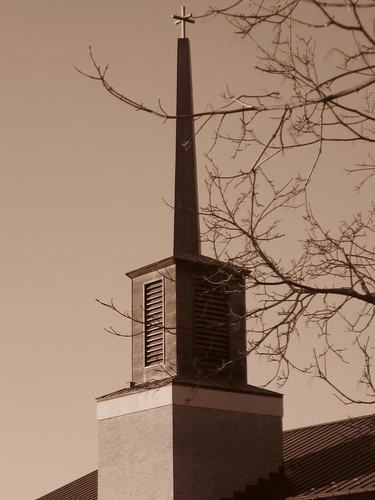
Staunton Church of the Brethren.
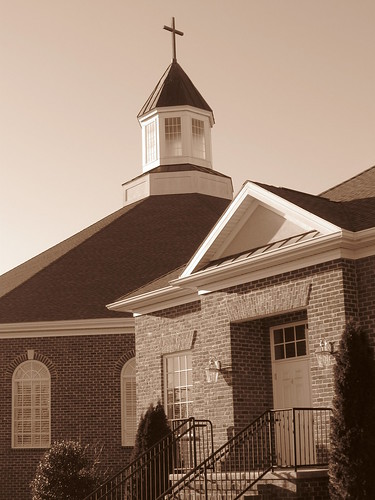
Memorial Baptist Church.
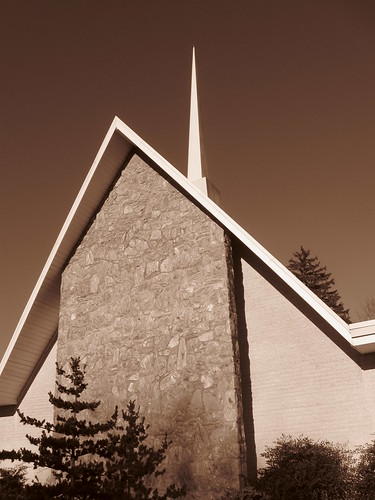
Staunton Seventh Day Adventist Church.
Spires Seen Along Greenville Avenue
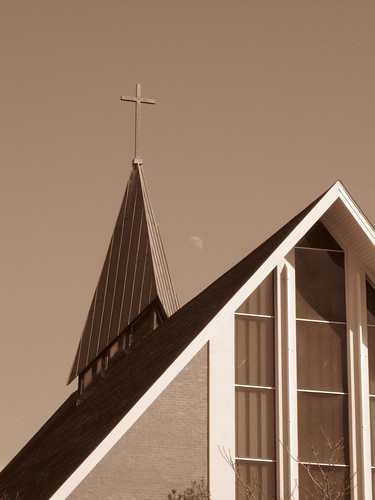
Third Presbyterian Church on Barterbrook Road.
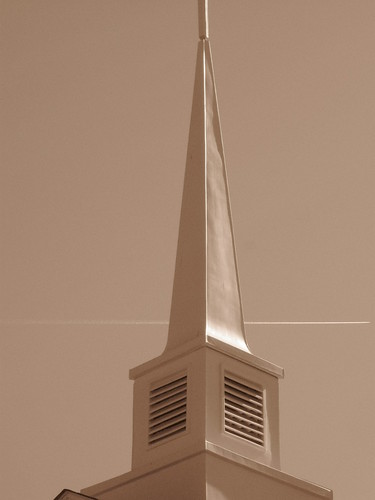
Linden Heights Baptist Church.
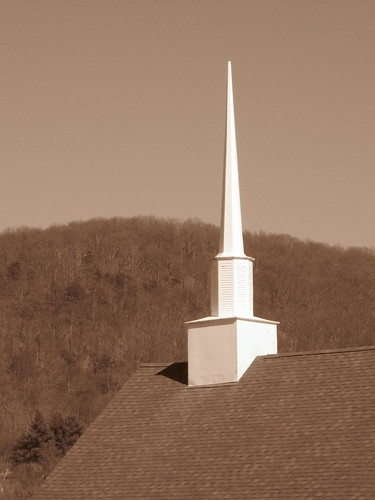
Lifeflow Church.
Spires and Symbols of Faith Around Our City
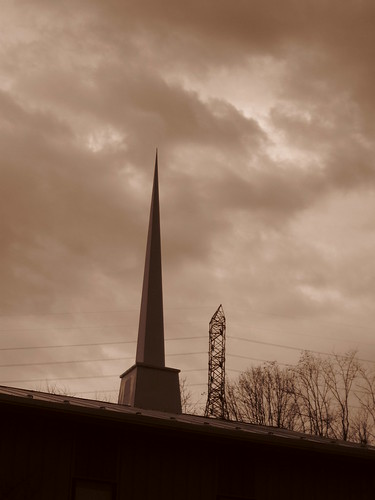
Staunton Alliance Church, New Hope Road.

Olivet Presbyterian Church on Richmond Road.
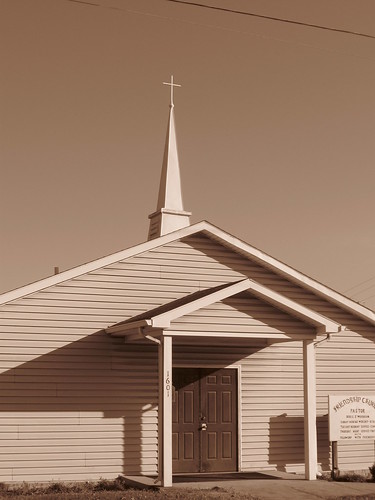
Friendship Church on West Beverley Street.
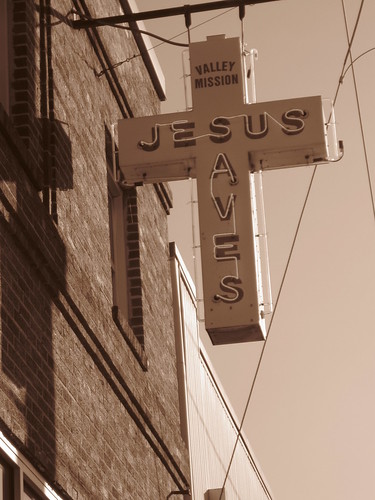
The Valley Mission on West Beverley Street.
Spires and Symbols of Faith Around Our City
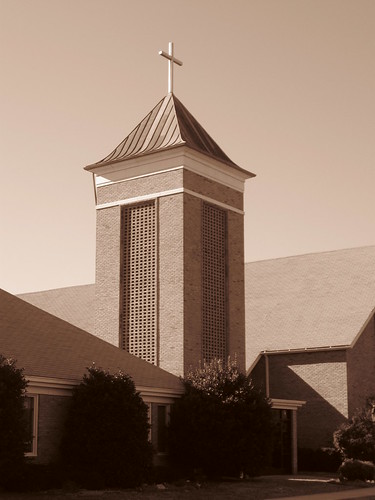
Christ United Methodist Church on Churchville Avenue.

Staunton Orthodox Presbyterian Church on Grubert Street.

Church of G-d, Grubert Steet.

Calvary Baptist Church, Tuxedo Road and Garland Drive.

Bethany Presbyterian Church, Fifth Street.
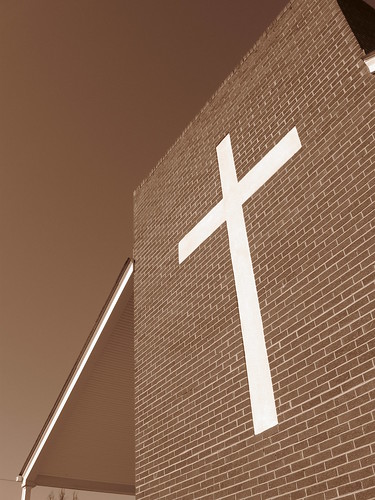
Fifth Street United Brethren Church.
Spires and Symbols of Faith Around Our City
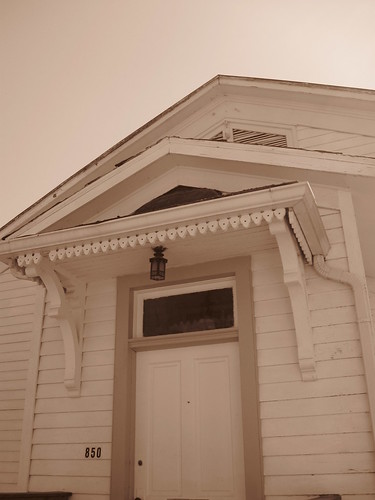
Promiseland Baptist Church on Maple Street.
And the Lord spake unto Moses, saying, See, I have called by name Bezaleel the son of Uri, the son of Hur, of the tribe of Judah: And I have filled him with the spirit of God, in wisdom, and in understanding, and in knowledge, and in all manner of workmanship, To devise cunning works, to work in gold, and in silver, and in brass, And in cutting of stones, to set them, and in carving of timber, to work in all manner of workmanship. And I, behold, I have given with him Aholiab, the son of Ahisamach, of the tribe of Dan: and in the hearts of all that are wise hearted I have put wisdom, that they may make all that I have commanded thee;” – Exodus 31:1-6
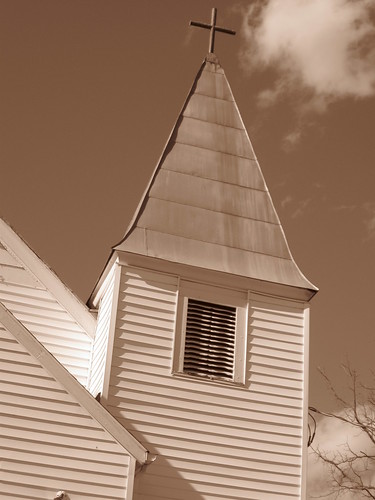
Mount Salem Baptist Church on Stuart Street (Old Sanctuary).
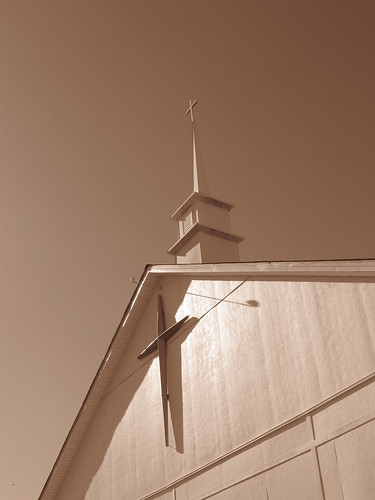
Mount Salem Baptist Church on Stuart Street (New Sanctuary).
Spires and Symbols of Faith Around Our City
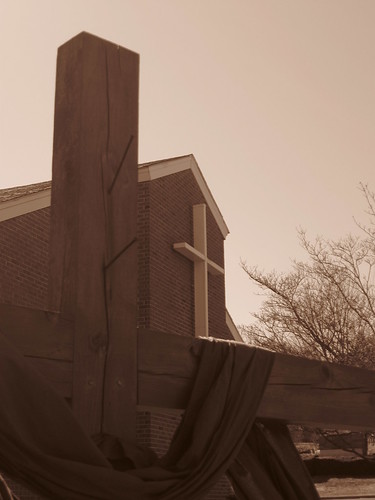
Cherryvale United Methodist Church on Cherry Hill Drive.
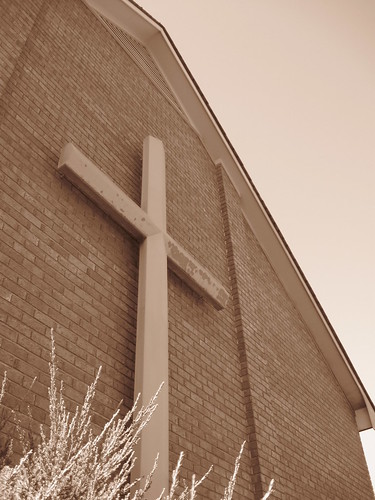
Calvary Assembly of God on Springhill Road.

Staunton Church of Christ on Churchville Avenue.
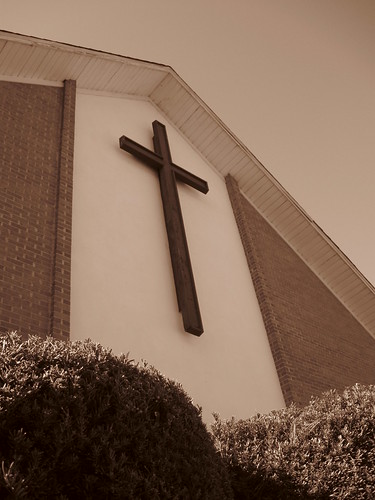
First Church of God on Shutterlee Mill Road.
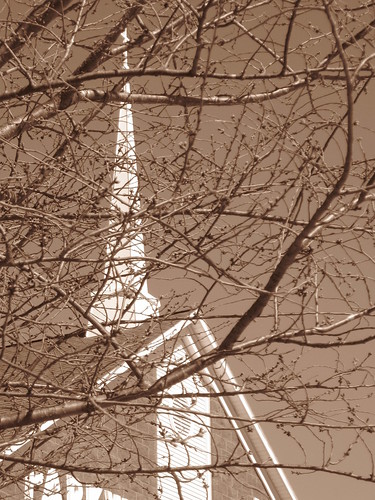
Parkway Wesleyan Church on Springhill Road.
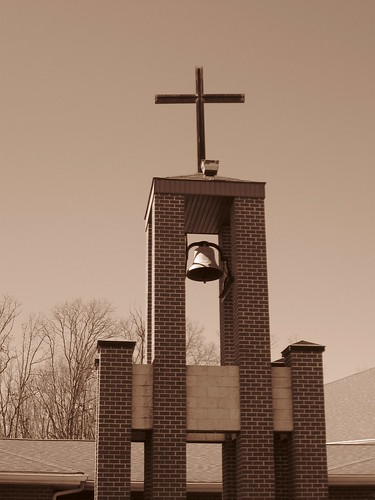
Saint Paul's United Methodist Church on Shutterlee Mill Road.
Spires and Symbols of Faith Around Our City

Bible Way Community Church on West Beverley Street.
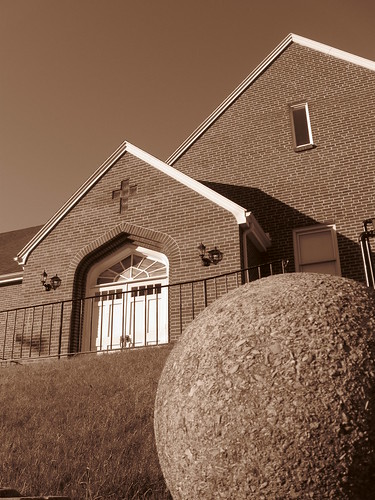
First Church of the Nazarene on West Beverley Street.
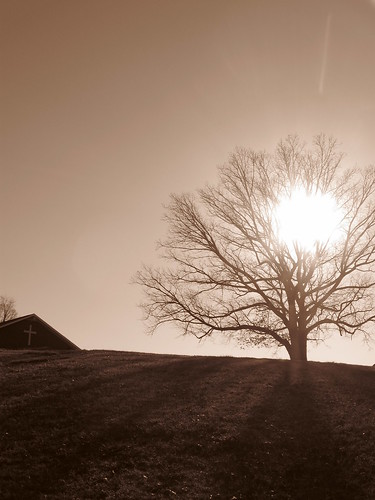
Faith Baptist Church on Essex Drive.
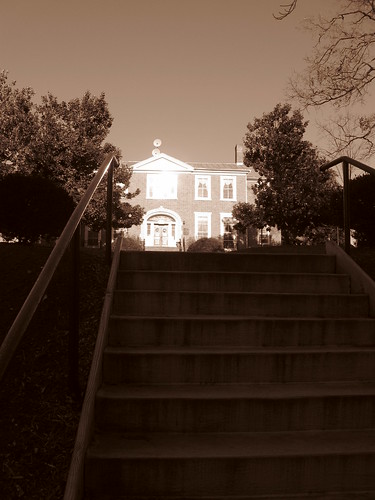
Community Fellowship on Market Street.
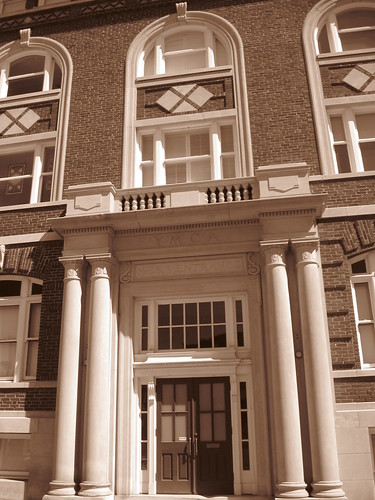
Downtown Young Men's Christian Association on Frederick Street.
Seeing Things in “Living Color”
Friedrich spoke thickly. "Don't you think, Mr. Kingscourt, that people would be much better if they were better off?"
No! If I believed that, I should not be going off to my lonely island; I should have stayed in the midst of humanity. I should have told them how to better themselves. They needn't wait to begin. Not a thousand years, not a hundred, not even fifty. Today! With the ideas, knowledge, and facilities that humanity possesses on this 31st day of December, 1902, it could save itself. No philosopher's stone, no dirigible airship is needed. Everything needful for the making of a better world exists already. And do you know, man, who could show the way? You! You Jews! Just because you're so badly off. You've nothing to lose. You could make the experimental land for humanity. Over yonder, where we were, you could create a new commonwealth. On that ancient soil, Old-New-Land!"
Friedrich heard Kingscourt's words only in a dream. He had fallen asleep. And, dreaming, he sailed through the Red Sea to meet the future."
-- Theodor Herzl, Altneuland [4.]
In the Nineteenth Century, Theodor Herzl penned his futurist novel, Altneuland. In it, he envisions a renewed Zion, a land of rich agriculture and an industrious people. If Herzl were to step into modern-day Israel, he would probably feel very much at home. It probably would not surprise you that Theodor Herzl devoted most of his life to the creation of a Jewish homeland. The journey of Kingscourt and Friedrich that unfolds in this work of fiction is instructive because it puts form and color to the work Herzl sought to achieve. Likewise, Jules Verne in his Voyages Extraordinaires creates vivid pictures of journeys to the moon and fantastic invention that would actually occur in the century to follow!
Art often seems to come in advance of innovation. To lay forth a vision is an act of hope. In my own work PONTIFUS, [5.] which presents a vision for the future yet to come. It was written because I saw a dearth of encouraging vision being given to the generations to follow. In the post-Sputnik world of my youth we had Tom Swift as well as Jules Verne. American President, John F. Kennedy just said one day that we needed to put a man on the moon. Did we know how to even do it? I seriously doubt it, but the picture had already been painted. Brilliant men and women would fill in the details as the work progressed toward that day in July 1969 when Neil Armstrong and Buzz Aldrin walked on the moon..
Some of my fellow believers will, no doubt, say that my assertion is arrogant. They will invoke a reading of Scripture that they feel commands a more passive response to the world. I do not fault them for wanting to 'wait on the Lord,' but as I read stories like that of Nehemiah who prayed and worked ardently to rebuild the walls of Jerusalem, I see in them the most vivid portrayal of IMAGO DEI, the Scriptural truth that man is made in the Divine image.
Surprised by Joy
[click to read]
By C. S. Lewis
This book is written partly in answer to requests that I would tell how I passed from Atheism to Christianity and partly to correct one or two false notions that seem to have got about. How far the story matters to anyone but myself depends on the degree to which others have experienced what I call "joy". If it is at all common, a more detailed treatment of it than has (I believe) been attempted before may be of some use. I have been emboldened to write of it because I notice that a man seldom mentions what he had supposed to be his most idiosyncratic sensations without receiving from at least one (often more) of those present the reply, "What! Have you felt that too? I always thought I was the only one." (read more)

Warnie's Box Garden

My earliest aesthetic experiences, if indeed they were aesthetic, were not of that kind; they were already incurably romantic, not formal. Once in those very early days my brother brought into the nursery the lid of a biscuit tin which he had covered with moss and garnished with twigs and flowers so as to make it a toy garden or a toy forest. That was the first beauty I ever knew. What the real garden had failed to do, the toy garden did. It made me aware of nature — not, indeed, as a storehouse of forms and colours but as something cool, dewy, fresh, exuberant. I do not think the impression was very important at the moment, but it soon became important in memory. As long as I live my imagination of Paradise will retain something of my brother's toy garden. And every day there were what we called "the Green Hills"; that is, the low line of the Castlereagh Hills which we saw from the nursery windows. They were not very far off but they were, to children, quite unattainable. They taught me longing — Sehnsucht; made me for good or ill, and before I was six years old, a votary of the Blue Flower.” – C. S. Lewis, Surprised by Joy
Journey from Atheism to Theism
C. S. Lewis Documentary
A Challenge, a Pis Aller!
What drove me to write was the extreme manual clumsiness from which I have always suffered. I attribute it to a physical defect which my brother and I both inherit from our father; we have only one joint in the thumb. The upper joint (that furthest from the nail) is visible, but it is a mere sham; we cannot bend it. But whatever the cause, nature laid on me from birth an utter incapacity to make anything.
With pencil and pen I was handy enough, and I can still tie as good a bow as ever lay on a man's collar; but with a tool or a bat or a gun, a sleeve-link or a corkscrew, I have always been unteachable. It was this that forced me to write. I longed to make things, ships, houses, engines. Many sheets of cardboard and pairs of scissors I spoiled, only to turn from my hopeless failures in tears. As a last resource, as a pis aller, I was driven to write stories instead; little dreaming to what a world of happiness I was being admitted. You can do more with a castle in a story than with the best cardboard castle that ever stood on a nursery table." -- C. S. Lewis, Surprised by Joy
Mountain Laurel in the Rain
Photos by Bob Kirchman


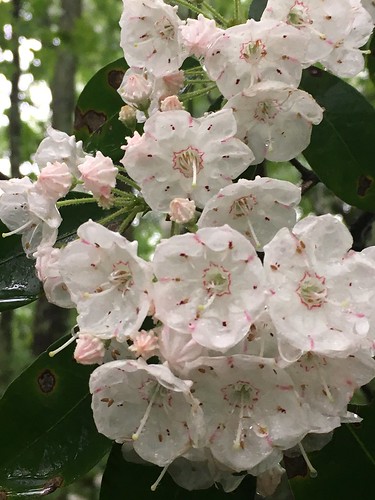
Being a Light in the Darkness I
[click to read]
The late Chuck Colson was a key figure in the notorious Watergate Scandal. After being sent to prison for related crimes, his 'tough guy' persona was softened due to a radical encounter with Jesus. On this classic broadcast, you'll hear Dr. Dobson's conversation with Chuck Colson. He describes the ways in which God has used his life since Watergate to minister to those incarcerated. (read more)
Being a Light in the Darkness II
[click to read]
Matthew 5 commands us to let our light shine before men, in order to glorify our Heavenly Father. This classic edition features the conclusion to Dr. Dobson's interview with the late Chuck Colson. Chuck talks about his book The Body and highlights the church's role to be a beacon of truth in this morally failing society. Hear what Christians can do to better engage culture. (read more)
Truth in Fiction, The Caine Mutiny
[click to read]
When Herman Wouk wrote his classic novel, The Caine Mutiny, he drew from his extensive observation of men and ships from his own service experience. His imagination concerning the situation with Captain Queeg would go on to inform actual Naval policy and even the creation of the 25th Amendment. (read more)

United Christian Academy students leave Baltimore's Graffiti Alley after an intense session of painting.
